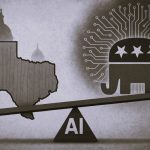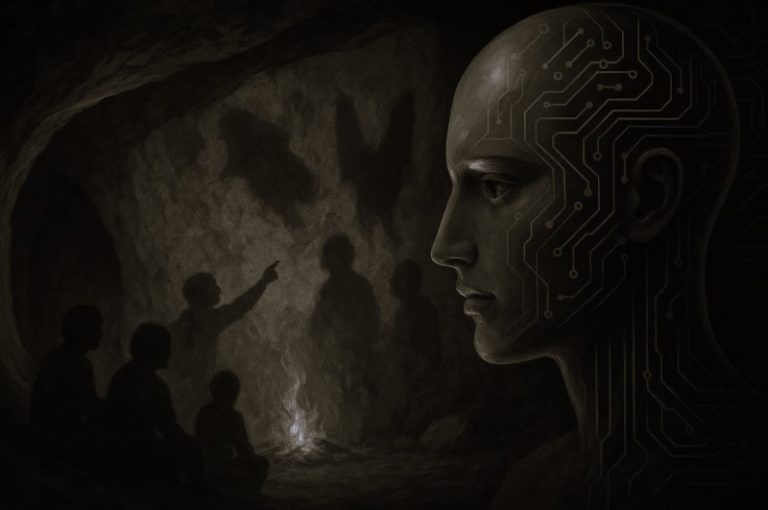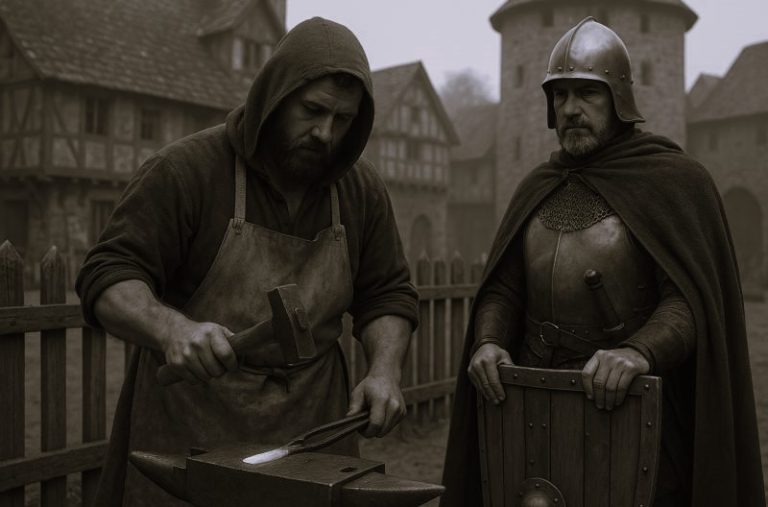

American evangelicalism has had several “beginnings”, each contributing to the shape of present-day evangelicalism.

By Dr. Charles J. Conniry, Jr.
George Fox University
Introduction
Evangelical Christians make up 23 percent of the American population—approximately 69.5 million people in 2007. The words evangelical and evangelicalism come from the New Testament expression for good news or gospel . A related English word is evangelism , which describes a variety of activities that are aimed at converting non-Christians. In that sense, evangelical Christianity is distinguished by its efforts to spread the Christian faith.
Th e term evangelical has evolved in meaning over time. Th e word first appeared in the sixteenth century to describe Catholic thinkers who challenged the Church to replace its beliefs and practices with more biblical ones. After that, the word referred to Protestants who rejected the authority of the Roman Catholic Church, and held to the Bible alone as their authority. In seventeenth-century Germany, the word distinguished Christians who followed Martin Luther’s teachings (Lutherans) from those who embraced John Calvin’s theology (Reformed or Calvinist Christians). Today in Europe, the term evangelical is a synonym of Protestant.
Th e meaning of the term also evolved in North America. From the sixteenth through mid-nineteenth centuries, evangelical referred to all Protestants. After the Civil War, the term all but disappeared, and Protestants were either fundamentalists or modernists. Th e word reappeared in the 1950s. Scholars some-times use the prefix neo (neo-evangelical) to highlight the difference between the term’s newer and older uses. The term neo-evangelical refers to a certain type of Protestant. Like fundamentalists, they believe that the Bible is historically ac-curate and theologically authoritative. However, they also accept the findings of secular disciplines like science. Today in the United States evangelical has expanded to include fundamentalists (the religious right), neo-evangelicals (or moderate evangelicals), Pentecostals (including charismatics), the evangelical left , and a substantial portion of the so-called emerging-church movement.
Evangelism in Historical Perspective
Overview
It is virtually impossible to grasp the complexities of contemporary evangelicalism without considering its diverse past. In a word, American evangelicalism has had several “beginnings.” Each of these points of origin has contributed to the shape of present-day evangelicalism.
The Rise of Puritanism and the Great Awakening
Most Christians in seventeenth- and eighteenth-century America were Puritans. They migrated from England in search of religious freedom. A series of revivals, known as the Great Awakening, swept the colonies between 1730 and 1745. Puritan pastor Jonathan Edwards is one of the best-known figures of that time. He accounted for this “surprising work of God” in theological terms. He stressed that God was the initiator of these religious experiences, and that human beings were passive recipients. Edwards taught that while people had to submit to God’s saving influence, they had no power to accept or reject these divine blessings. In other words, the revivals of the Great Awakening stressed God’s sovereignty and minimized human free will. The Revolutionary War put an end to the revivals of the Great Awakening.
The Rise of Second-Wave Revivalism

Within less than two decades after the Revolution, revivals of a different sort began to appear. Historians refer to these revivals as second-wave revivalism, or the Second Great Awakening . Unlike the Great Awakening, nineteenth-century revivals stressed the role of human free will. While the Great Awakening occurred mainly in Puritan circles, second-wave revivals started with Methodists, who first arrived on the American scene in 1766. They made frequent use of open-air meetings, and stressed the need for people to choose to follow Jesus Christ. By 1830, Methodists had grown to more than half a million in number. Baptists used the same revivalist methods. They increased tenfold during the three decades after the Revolution. Evangelistic tent meetings were commonplace in the first half of the nineteenth century.
Many churches adapted the format of revivals for their regular worship services, abandoning the liturgical format that Christians had followed for centuries. Preaching in these new worship services packed the same evangelistic fire as the revivals themselves. The singing before the sermon prepared people’s hearts for what the pastor would say. Eventually, this became the standard worship format for many Protestant churches in North America, continuing well into the twentieth century.
Nineteenth-century evangelicalism was a product of its age. It drew from, and contributed to the nation’s growing sense of individual freedom and democratic fervor. Its theologians produced writings that harmonized with the philosophy and science of the day. Revivals filled existing churches with new believers. Thousands of new churches were established. Voluntary societies and social reform movements worked to create a “Christian America.” Evangelicals established city missions to provide food, shelter, and clothing for the poor. They launched eff orts to visit the sick and imprisoned. They comforted the dying and supported unwed mothers. They worked to improve working conditions for industrial laborers. They provided humane treatment for the mentally ill and enacted prison reform. Many advocated for the abolition of slavery, which accentuated the tensions between the North and South, and contributed to the onset of the Civil War in 1861.
The Rise of Fundamentalists and Modernists
After the Civil War, American evangelicalism entered a new chapter. Seventy years earlier it had come to its own in the newly ordered nation. Buoyed by the optimism of democratic freedom and the enthusiasm of second-wave revivalism, it witnessed unprecedented growth. Along with most other Americans before the war, evangelicals believed the future would only get brighter. The predominant theology of future events was “postmillennialism,” which held that Christ would eventually come at the end of an extended period of unbroken progress. Almost all evangelicals believed they were living in that golden era—until the Civil War. Casualties of the war extended well beyond the 60,000 that died. The nation reeled under the pain of its own making. Hopes of a glorious future collided on the hard reality of suffering and uncertainty. Evangelicals had to reorient themselves in a world that had betrayed their beliefs.

After the Civil War, evangelicals split into two opposing groups: fundamentalists and modernists. Several factors contributed to this split. One was the teaching of English clergyman, John Nelson Darby. Darby divided the past, present, and future into different stages or “dispensations.” In each of these dispensations, the rules and regulations unique to that era guided God’s relationship with human beings. The present dispensation, according to Darby and his followers, would end only after a period of suffering and depravity. Circumstances would get worse rather than better before Christ’s return. Before the Civil War, most Protestants believed they could bring about Jesus’s return by making the world a better place. After the war, they had little reason to hold onto this hope.
Darby’s teaching, which we call dispensationalism, provided some with the help they needed to make sense of the war and its aftermath. Ironically, dispensationalism attracted few followers in its country of origin. However, circumstances in postwar America were different from those in England. It took only two decades after the war for dispensationalism to become the preferred teaching of “end times” for American fundamentalists. Modernist Christians, on the other hand, took sharp exception to dispensationalism.
Another factor that led to the division of American Christianity after the war was the teaching of evolution. English naturalist, Charles Darwin, introduced it. Darwin’s teaching offered an alternative to the bleak outlook of the dispensationalists. In contrast to fundamentalists, Christian modernists were unwilling to resign themselves to a future that would only get worse. For them, evolution offered the familiar hope of a brighter future, while accounting for that hope in scientific rather than theological terms.
A third factor that contributed to the split of American Christianity was German rationalism. Throughout the nineteenth century, a steady stream of pastors and teachers poured from Germany into North America. Many were German-born immigrants. Others were Americans who had received advanced theological education in Germany’s research universities. In either case, they brought teachings that had circulated in Europe for nearly a century, but were largely unknown to North America. German rationalists had a lot in common with Darwin’s evolutionists. However, they were inspired more by philosophers than scientists. Their main goal was to reinterpret Christian Scripture in the light of modern rationality. They denied the Bible’s accounts of miracles. They also rejected the seven-day creation story in Genesis. The teachings of these rationalists attracted many of the same American Protestants that preferred evolution. In essence, it gave credence to Darwin’s theory. It also gave modernists a reasonable alternative to what they now considered a misleading view of Scripture, which before the war had led them to believe (wrongly) that their good deeds would bring about Christ’s return. American Protestantism remained divided between fundamentalists and modernists throughout the first half of the twentieth century
The Rise of Pentecostalism
While tensions were mounting in the early 1900s between fundamentalists and modernists, another Christian movement was being born: Pentecostalism. During this time, a series of separate revivals broke out in places as diverse as Kansas, North Carolina, Texas, California, and Tennessee. One of the most remarkable of these revivals was the Azuza Street Revival in Los Angeles. William Seymour, an African American pastor, led Revivalistic meetings there from 1906 to 1909. He rejected existing racial barriers in favor of “unity in Christ.” He also believed that women were entitled to serve in any level of church leadership to which the Holy Spirit called them. The most distinctive characteristic of this movement is the experience of “speaking in tongues” (i.e., speaking in a foreign or heavenly language that one had not learned beforehand). Seymour and other Pentecostal leaders believed that speaking in tongues was the outward evidence that one had received the Holy Spirit.
The Rise of “New Evangelicalism”

By the mid-1950s, a growing number of fundamentalists began to talk about the need for a new evangelicalism. While many eventually made the transition from fundamentalism to new evangelicalism, it did not occur overnight. It was, in many ways, a gradual and painful process. Evangelist Billy Graham was one of the strongest proponents of moderate evangelicalism. Graham was convinced that his ministry would have the greatest impact if he distanced himself from the sectarianism and anti-intellectualism of the fundamentalists. He sought to embrace a conservative theological position while adopting a liberal approach to social problems. He also favored a view of biblical inspiration that harmonized more readily with science. Today moderate evangelicals outnumber fundamentalists by a considerable margin.
The Rise of the Evangelical Left
During the 1980s and 90s, there emerged another evangelical beginning. As more and more fundamentalist and moderate evangelicals openly committed themselves to social and political conservatism, there occurred a countermovement of sorts. Many of these Christians were convinced that American evangelicalism was leaning so far to the ideological “right” that it was failing to address the more fundamental concerns to which Jesus directed the church. This countermovement is often referred to as the evangelical left . Members of this movement are theologically evangelical. They embrace the doctrines of the Incarnation, the atonement, and resurrection of Jesus Christ. They also consider the Bible to be the primary authority of religious truth. However, they are unique in that most of them embrace liberal politics. Th ey are inclined to be pacifists and are often opposed to capital punishment.
The Rise of the Emerging Church Movement
By the end of the twentieth century, an influential minority of evangelical Christians began to believe that the world had entered a new epoch—namely, the postmodern age. This new era, they said, brought with it a vastly different set of social norms and philosophical assumptions regarding the nature of truth. The postmodern age, or emerging culture as it is sometimes called, requires Christians to rethink how best to frame and express their beliefs, their worship of God, and their relationship to the wider world. Members of the emerging church movement generally agree that the world has entered a new epoch of its history. However, they are more politically and theologically diverse than evangelical moderates or the evangelical left . They prefer conversations to evangelism, relationships over institutional church structures, and authenticity over formality.
Diversity of Present-Day Evangelicalism

Th is brief historical overview shows that present-day American evangelicalism is the product of at least seven distinct “beginnings.” Its first point of origin derives from seventeenth- and eighteenth-century Puritanism. Flagship schools like the Westminster Theological Seminary in Philadelphia, and the Pennsylvania and Gordon-Conwell Theological Seminary in South Hamilton, Massachusetts, continue to preserve and promote evangelicalism’s Reformed tradition. Its second beginning came with second-wave revivalism in the early nineteenth century. The influence of this phase persists in a variety of forms. It is embodied in the widely accepted belief that people are free to choose whether they want to become Christians. It appears in the non-liturgical worship services carried on by the majority of Protestants in North America. It continues in the revivalist ministries of people like Billy Graham and Luis Palau. It is also evident in the social consciousness of moderate evangelicals, the evangelical left , and the emerging church movement. Th e rise of fundamentalism in the decades after the Civil War, was evangelicalism’s third beginning. Today, even though fundamentalist evangelicals are in the minority, they are still a potent force within American culture.
The influences of Pentecostalism, evangelicalism’s fourth beginning, are evident in every quarter of Christianity, including the Roman Catholic and Orthodox Churches. It is the fastest growing branch of Christianity in developing nations. Many analysts believe that by the year 2020, Pentecostalism will overtake the Roman Catholic Church as the largest Christian denomination in Latin America. Evangelicalism’s fifth beginning came with the rise of moderate evangelicalism in the 1950s. Some of the better-known moderates include Billy Graham, Carl Henry, Millard Erickson, and Rick Warren.
Evangelicalism’s sixth beginning came with the rise of the evangelical left. Not since the nineteenth century has the social consciousness of American evangelicalism been more alive than in the present-day evangelical left. Some of the nation’s most influential Christians are members of this branch of evangelicalism. Former president Jimmy Carter has led the way in a variety of humanitarian efforts. Ron Sider, founded Evangelicals for Social Action to explore biblically based solutions to social and economic issues. Jim Wallis is founder of the Washington, D.C.–based evangelical community Sojourners as well as founder and editor Sojourners Magazine. He has authored several books, and hundreds of articles calling for social change, that is inspired by the teachings of Jesus Christ. Other well-known evangelicals of this stripe include Tony Campolo, Philip Yancey, Jesse Jackson, and Katherine Kroeger.
The emerging church movement, evangelicalism’s seventh and most recent beginning, is best represented in the writings of Brian McLaren, the movement’s most influential leader. Inspired by the humanitarianism of the evangelical left , McLaren is seeking to offer a reconstruction of Christian life and thought amid the deconstructionist attitudes of many who are associated with the movement. On one occasion, McLaren addressed an audience of emerging-church leaders that had gleefully rejected the behavioral constraints of “traditional Christianity.” He said, “Our world doesn’t need Christians who drink more, smoke more, or swear more. It needs Christians who live like Jesus lives and who care for the things that Jesus cares about” (from notes taken at “Revolution,” an Off the Map conference, Seattle, Washington, November 4, 2006).
Misperceptions of Evangelicalism
Despite the diversity of American evangelicalism, many in the United States are under the impression that evangelical refers only to the religious right. They think that all evangelicals are opposed to abortion, gay rights, and the ordination of women. The majority of evangelicals, however, are either moderate evangelicals, members of the evangelical left , or part of the emerging church movement. These Christians typically do not locate the center of their spirituality around such issues. Nor do they wish to be stereotyped as social or political conservatives. They reject the harsh rhetoric of fundamentalist evangelicals. They believe that the greatest evils to overcome include the AIDS crisis, and world hunger. Nevertheless, fundamentalist evangelicals are often more outspoken than other evangelicals.
Some of the best-known evangelical organizations are fortresses of the religious right. The Traditional Values Coalition is one example. It claims to be the largest Christian grassroots church lobby in America, representing 43,000 churches nationwide. It says its plan is “to take back the courts from the ACLU and the anti-God Left ” (Traditional Values Coalition 2007). This organization encourages supporters to write to their civil leaders. It opposes issues like stem-cell research, abortion, and gay marriage. It also promotes political candidates that are socially conservative.
Another fundamentalist organization is Focus on the Family. Millions of Americans listen to its daily radio broadcasts. The organization’s nonprofit status keeps it from supporting partisan politics, but its representatives are free to speak off the record. Not only does it offer advice on how to rear children, it also recommends which candidates to vote for, and when to lobby for specific social issues. The organization, on several occasions, has collaborated with key churches to run voter-registration campaigns, distribute voter guides, and encourage people to get out and cast their votes.
Th e National Association of Evangelicals is one of the most influential representatives of American evangelicalism. An analysis of its activities between 2001 and 2006 shows that it was focused as much on politics as religion. Analysts credit the NAE with rallying conservative Christians behind President George W. Bush’s 2000 election and 2004 reelection. Former NAE president, Ted Haggard, conducted weekly conference calls with White House officials and evangelical leaders. He started these conferences in 2001, and continued them until scandal forced his resignation in November 2006. With 30 million members, the NAE has the reputation of being the standard-bearer of evangelical beliefs and values. These groups have played a major role in leading Americans to think that most evangelicals belong to the religious right.
Conclusion
Popular misperceptions aside, American evangelicalism is a rich tapestry of Christian religious traditions that strengthens America’s social fabric and enhances the existence of countless individuals. Fundamentalist evangelicals remind us that truth matters, and should not be taken lightly. Modernist evangelicals remind us that all truth is God’s truth. The evangelical left reminds us to live out Christian truth by loving our neighbors as ourselves. Emerging-church evangelicals remind us that even if truth does not change, our expressions and experiences of it do.
Further Reading
- Campolo, Tony, Letters to a Young Evangelical: The Art of Mentoring. New York: BasicBooks, 2006
- Marsden, George. Evangelicalism and Modern America. Grand Rapids, MI: W.B. Eerdmans, 1984
- McGrath, Alister. Evangelicalism and the Future of Christianity. Downers Grove, IL: InterVarsity Press, 1995
- Noll, Mark A. The Rise of Evangelicalism: The Age of Edwards, Whitefield, and the Wesleys . Downers Grove, IL: InterVarsity Press, 2003
- Noll, Mark A., David Bebbington, and George A. Rawlyk. Evangelicalism: Comparative Studies of Popular Protestantism in North America, The British Isles, and Beyond, 1700–1990. Religion in America Series. New York: Oxford University Press, 1994
- Sweet, Leonard I. The Evangelical Tradition in America. Macon, GA: Mercer University Press, 1997
- Traditional Values Coalition. “About TVC.” Available at: http://www.traditionalvalues.org/about.php (accessed October 12, 2007)
- Webber, Robert. The Younger Evangelicals: Facing the Challenges of the New World. Grand Rapids, MI: Baker Books, 2002.
Originally published by Faculty Publications – George Fox Evangelical Seminary 32 (2008, 153-160) under the terms of a Creative Commons license.






